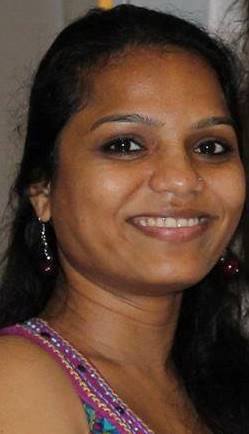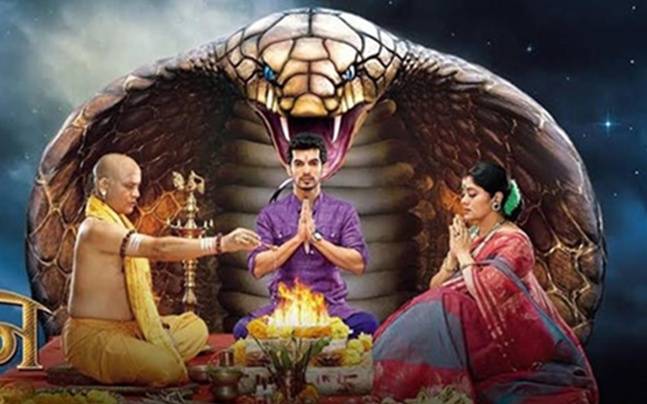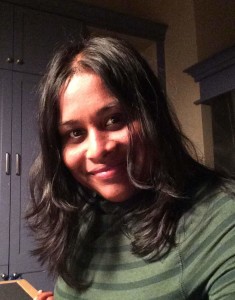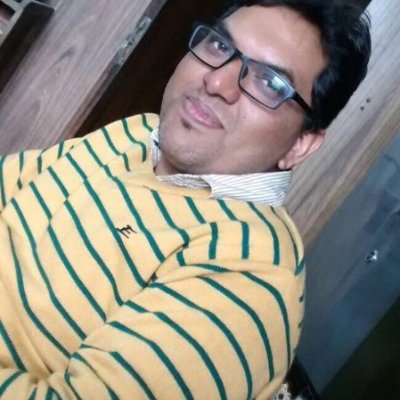Swati Kamble
 As I read the article ‘India denies ‘caste’ as factor of gender inequality‘ by Meena Menon, in The Hindu, I was reminded of my experiences at the World Conference on Youth. Below is my account of the incidence.
As I read the article ‘India denies ‘caste’ as factor of gender inequality‘ by Meena Menon, in The Hindu, I was reminded of my experiences at the World Conference on Youth. Below is my account of the incidence.
The World Conference on Youth started on 6th May 2014 with a grand inauguration ceremony in Hambantota, the birth place of Sri Lankan President Mahinda Rajapaksa. This was the first ever global conference on youth to have been organized in Asia. It was a four and a half hour long journey from Colombo city to Hambantota, with enchanting scenic beauty of the countryside and the never-ending clean beaches. Over a thousand youth delegates from across 169 countries made their enthusiastic presence in this event. Apart from that, many youth represented their NGOs. Official delegates from Youth Ministries of several countries were present for the negotiations on the declaration document that was going to be the outcome of the World Conference on Youth. An International Youth Task Force (IYTF), appointed by Ministry of Youth Affairs and Skills Development of Sri Lanka, was advising the Government of Sri Lanka on preparations for the conference.
Ms. Jayathma Wickramanayake, the UN youth delegate, who made an opening statement at the Inauguration, emphasized on youth power, and not only youth rights but also youth responsibility toward an inclusive, sustainable development agenda for all. She stated very enthusiastically “Youth are not the leaders of tomorrow, we are the leaders of today.” UN Envoy on Youth Ahmad Alhendawi spoke on behalf of the UN Secretary-General. He emphasized the importance of youth representation in global forums such as this one as well as in their own communities around the world. He said youth should make their voices heard loud and clear. H. E. John W. Ashe, President of the United Nations General Assembly, gave a passionate speech making critical remarks about the extreme poverty in the world despite availability of resources. He further spoke emotionally about women’s rights stating “Women comprise 50% of the world’s population and they gave birth to the other half. You owe them your existence.” Mr. Ashe reiterated the message of the Envoy on Youth in his conclusion by saying the youth should make their voices heard.
The key note speech was delivered by the President Mr. Mahinda Rajapaksa. He emphasized the importance of youth participation in global agendas like Rio+20 and post 2015 development agenda. He emphasized that this era is marked with youth like never before as there is a large youth population, especially in the global south. Therefore no global agenda can be complete without considering youth needs and challenges. In his conclusion he appealed to youth who represent the world to regard their country as sacred and that it cannot be second to any of their interests. He was talking from the perspective of the Sri Lankan conflict that left a lot of youth disillusioned and had lost their confidence during the era of conflict. From this very perspective he hosted the world conference on youth in Sri Lanka.
One of the objectives of the World Conference on Youth was ‘To create an inclusive youth participation platform that enables young people to review the progress on the achievement of the ‘Millennium Development Goals’. It is highly debatable as to how far the conference succeeded in creating an inclusive youth participation platform, especially for marginalized youth. One of the outcomes of the event is that issues of youth will be prioritized in the post 2015 development agenda. It is on this matter that my article wishes to shed light.
The structure of the conference was that in the morning sessions there were presentations by expert panelists on seven foundations1 to be included in the post 2015 development agenda, followed by the Question and Answer sessions by youth delegates and participants. After which the youth delegates formed groups to come up with recommendations based on the foundations they chose. The discussions on the foundations happened simultaneously, so a participant attending one of the sessions on the chosen foundations could only contribute to the same foundations throughout three days. The recommendations that came out of the discussions then were handed to a youth facilitator who would submit these to the UN youth representatives/delegates. The draft declaration document was taking shape with the recommendations coming from the youth around the world. Although these sounds like participatory actions, and to some extent it was, the conference did not make conscious efforts as it should to create inclusivity of marginalized youth around the globe. The nature of the preparatory process of the declaration was top down and bureaucratic.
The conference began on 7th May 2014. On the first day only the official delegates (Government officials from Youth Ministries) appointed by the Government were present in the negotiation rooms where debates and discussions over the recommendations were taking place. In the discussions in the regional meetings, held simultaneously, it was proposed that the youth delegates should be allowed to participate in the discussion and contribute to the process of developing declaration. From 8th May onwards youth delegates started to attend the negotiations.
On the 8th I chose to go for a discussion on the foundation ‘Empowering Marginalised Youth Including Most at Risk Young People’. The panelists were a transgendered activist Ms. Satya, speaking for the rights of LGBTQI, and a professor from the Open University executing ‘inclusive educational strategies’ to enhance marginalized youth participation in the education institute. The panelists were not equipped to handle the vastness of this foundation. Ms. Satya spoke passionately for the rights of LGBTQI and narrated her own testimony.
The professor shared the interventions that the Open University in Sri Lanka had made to create spaces for the marginalized population. However the presentation did not adequately define which of the marginalized groups they were referring to while making these interventions. Thus I had to question the panelists as to what measures should be taken to ensure equitable and active participation of youth from marginalized sections of society, who are discriminated against based on their social status, culture, socio-economic status, caste, race, ethnicity, gender, disability etc. How are we ensuring that the youth from Roma community from Central and Eastern Europe, Afro descendants from Americas and Africa, Dalits of the Indian sub-continent are represented in this platform? Have we attempted defining these groups and making a list of such marginalized communities and categories and made sure that the youth from these communities and categories actively participate?

I met a young Roma woman, Ms. Alexandra, who struggled to put forth her ideas of inclusive policy making and implementation in her regional meeting and a Brazilian Afro-descendant model and activist, Ms. Luana Genot, who tried lobbying during the negotiations alongside me. We came to participate in this group with great expectations and then we realized it was our responsibility to put forth all that matters to the marginalized communities we belong to. Marked with similar socio-economic realities Dalits, Roma, Afro-descendants and Black communities had the same pressing issues of lack of quality and affordable social infrastructure, social stigma and lack of information to get out of the vicious cycle of poverty, discrimination and injustice. And thus our recommendations stated:
1. Recognize and define the marginalized groups as per the country contexts based on evidence (disaggregated data), needs and rights. Ensure that each country will recognize and dedicate specific budget for identified marginalized youth (by culture race, caste, ethnicity, religion, linguistic, gender, sexual, and socio-economic conditions) monitored by international organizations to ensure adequate representation of those groups in the development of the post-2015 agenda.
2. Design appropriate laws and policies to introduce mechanisms of meaningful and effective representation of diverse marginalized youth by means of quotas and reservations to meet their needs, to involve them in policy making and facilitate their active economical and political participation, and to realize their full freedom of human rights and development.
3. Call on Member States to allocate specific budgets dedicated to marginalized youth, to implement outreach programs and accessible, affordable and quality social infrastructure, including health services, education, employment opportunities, especially in the relevant settlements with high concentration of marginalized youth, and to develop awareness raising programs to reduce stigmatization at all levels.
The next step was to ensure that these recommendations went into the Colombo Declaration on Youth. In a hall with a semi-circular set up, like the UN General Assembly or UN HRC, there sat youth representatives appointed by the UN, Official delegates from youth ministries from various countries and Youth delegates. I sneaked a peek into the hall for as much as equipped I may be to contribute to the discussion with my degree in policy studies, I wasn’t a ‘youth delegate’. The document was put up on a large screen and corrections, additions, deletions, reservations of countries on one point or the whole recommendation were being documented.
I sat there studying meticulously as to which country opposed and supported which points and for what reasons. Small countries like Papua New Guinea, Samoa, Philippines and Brazil were much progressive when it came to gender equality and the rights of LGBTQI, whereas Saudi Arabia and Iran strongly opposed even mention of LGBTQI. Saudi Arabia went as far as to attempt to remove ‘Rights’ from Sexual and Reproductive Health Rights. The Operatives (recommendations were named Operatives in the declaration draft) related to Ending Social Inequality and Empowering Marginalized Youth Including most at Risk Young People appeared on the document and I realized that even though the recommendations we had proposed appeared on the document they were not complete. We had proposed that the marginalized groups should also be defined in the document to state clearly which categories we are referring to while discussing about marginalized groups. The definition of the categories lacked terms like Race, Caste and Linguistic Minority.
I therefore approached the Indian Official delegate from the Youth Ministry and requested him to add the term ‘caste’ to the definition and the recommendation. I was pacified saying that since there are a lot of additions taking place in this sections and a lot of discussions and debates are getting stirred, and since it is only a matter of adding a word we will do it once the recommendation is ready. This explanation didn’t seem logical to me as if the changes were being made at that moment; it was much simpler to make an addition then. I did not give up and went to request the UN youth delegate to make a suggestion to the panel for creating an inclusive definition of marginalized groups that covers all the global categories. He principally agreed, but the technical difficulty was that the draft had already completed additions and deletions in the sections on Ending Social Inequality and Empowering Marginalized Youth Including most at Risk Young People.
I tried to look for the youth delegates from the morning sessions, who were together with me in making the recommendations. I met with Luana there and with her I spoke to the Youth Ministers from Brazil, Philippines, South Africa and Ghana about Caste Discrimination in India and its effects on the marginalized groups, especially young women. I chose to speak with these countries’ delegates because they had stirred a positive discussion on inclusivity during the section concerning inequality and empowerment of marginalized youth. The draft document was reviewed and changes were made till 9.30 pm on 8th May.
The next day i.e. on 9th May, I was set to attend the negotiations, however since the draft was going to be finalized the entry rules of the negotiation hall were made much more stringent. We could not enter the negotiation room in the early hours so I went for the panel discussion in the same group on Empowering Marginalized Youth Including most at Risk Young People. The panel discussion had a panelist from UNAIDS, Ms. Mikaela Hildebrand, Youth Program Coordinator and a representative from people with hearing and speech impairment, and a Minister from Sri Lanka.
Ms. Mikaela made a very enriching presentation and a practical one on how youth can participate actively beyond the World Conference on Youth, especially how they can constructively contribute to the process of Secretary General’s Synthesis Report. She explained the process that will begin in September 2014 starting with inputs from Open Working Group, HL Political Forum, Expert committee on Financing, President of GA Events, UNDG Consultations, Sustainable Solutions Networks, ICPD Beyond 2014, UNAIDS Lancet Commission and CS e.g World Conference on Youth. These inputs will be fed into the Secretary General’s Synthesis Report by the end of 2014. This report will synthesise a full range of inputs (govt, academic, CS, private).
It will be a crucial document which frames and sets out the Member States’ negotiations. Following the General Assembly in September 2014, member states’ negotiations will continue with intensified negotiations in May, June and July 2015. In September 2015, the Heads of State and Govt will convene at the September 2015 General Assembly to adopt the Post 2015 Agenda. With the crucial inputs on the process Ms. Mikaela also gave youth guidelines as to how they can be part of this dynamic process. She spoke about the lack of attention to Marginalisation in the MDGs and the lessons learnt and the proposed solutions as the post 2015 inequality consultation. She also discussed ACT 2015 Phase 2 Country level social action to advance Sexual and Reproductive Health and Rights (SRHR) and the HIV response post 2015 positions based on advocates’ workbooks with supporting online capacity building modules and tools to develop political advocacy/ lobbying strategies at the national level.
The representative of people with hearing and speech impairment spoke about his own struggle as a youth from a marginalized group and how collective efforts and more visibility and recognition about the specific problems faced by people with disability will bring in positive change for their development. He emphasized that there is a need for more sensitive policies and infrastructure for people with disability. The structures should enable them to move freely without barrier and that the global forums such as this one should ensure participation of the youth with disabilities. The minister from Sri Lanka briefly spoke about the sensitive youth policies in Sri Lanka that are facilitating and encouraging youth to take up an active role in policy making.
The panel discussion, especially the presentation from Ms. Mikaela, was packed with inspiration and made the group think beyond the World Conference on Youth. The groups of youth delegates started discussing the previous day’s recommendations. Luana and I shared notes on the difficulty we faced in the negotiation hall while adding the marginalized categories into the definition of margninalised groups and on how the recommendations we prepared were altered. So what was the point in taking youth inputs if the language and by it the meaning of the recommendation is going to be changed?
The facilitator informed us of the decision UN youth delegates made in the previous evening’s discussion that even though the main Colombo Declaration Document will not have the recommendations we make as they are, they will be preparing an annexure document which will have a Summary of discussion in the round table in the World Conference on Youth 2014. This annexure will include the recommendations without making any modification. This was a big achievement and therefore we started with creating an inclusive definition of marginalized youth groups, taking reference of Bali Declaration and the recommendation from the perspective of the marginalized youth groups. The summary document2 section, Empowering Marginalized Youth Emphasizing Most at Risk Young People, has all the recommendation without any modifications.

In the afternoon session I could enter in to the negotiation hall. The section on ending social inequality and empowering the marginalized youth, emphasizing Most at Risk Young People, had not come up yet for discussion or debate. After the discussion on a few operatives I realized that no changes were accepted on this day. The countries had to either take back the reservations they had made on particular opperatives or provide agreeable alternatives. Since this was a finalization session the operatives were being finalized. I realized this was the moment to push for my agenda to include a more inclusive definition of marginalized groups.
I went and spoke to the delegate from India; the delegate from the Ministry was not present, however the advisor to the Youth Minister Mr. Aman Jain (Syracuse University) was there. I spoke to him about proposing the inclusion of the term ‘caste’, in the definition of marginalized groups, to the panel. He argued against it asking me which of the UN documents has a mention of caste. I said the Shadow report “Hidden Apartheid” submitted by IDSN is recognized by the UN and that caste violence and atrocities are considered equivalent to Apartheid. He told me Shadow reports won’t do. But the fallacy of the argument is that if India will always guard against talking about caste discrimination in global forums how will the mention of caste come up in any of the global documents?
He further told me that he has consulted Minister of External Affairs and he has been told to comment nothing on this matter as it is an internal issue of India. I said but Caste is affecting the entire Indian sub-continent including India, Nepal, Pakistan, Bangladesh, Sri Lanka and Afghanistan, and also South East Asia. He said that even Nepal will resist. He further said that youth from India will see this document and will make use of it. I said the document is being created by youth precisely for the youth to use it. He said a new government is set to be formed in a few days and we don’t want to create any problems for them. I said but how can making the statement to end discrimination based on caste or for that matter any oppressive system create problems for a democratic government that is honest and responsive to the needs of its masses. He said he is going to vote against this operative if I try to include the term caste in the definition or anywhere else in the recommendations. This was a disturbing conversation and I realized that may be the recommendation will not have the term caste included after all. I said to myself at the least I can still try. And based on the discussion with the facilitator in the morning session about the annexure I was positive that the definition that we created as a group was going to be there in the summary document.
I first spoke to UN Youth Representative Mr. Lloyd and told him about the definition our group had prepared and that we had had a discussion with him the previous day. He told me to give the definition in writing and that he will try to read it. Soon he was approached by the official delegate, the advisor to youth minister, expressing his disagreement to adding the term caste. Mr. Lloyd told me that he can read out the definition but if India opposes the term he will not argue against it. He said if I could think of any other term that defines caste. I said they could add ‘descent and work based discrimination’ as is in the United Nations Committee on the Elimination of Racial Discrimination’s definition. Both opposed this time.
The UN youth representative finally said that the category socio-economic marginalization covers caste discrimination and that many countries globally will have such marginalized groups which are known by varied names but face socio-economic marginalization, and they are all not included here. He proposed that he will still read out the definition, India will raise hand against the term caste and then it will be taken out and the definition will remain. I said but that is not right. He said “so do you want me to continue arguing until we reach no conclusion and the entire recommendation will be taken out.” He said, we go as he says and the definition will retain the term caste. I went and met all official delegates from the countries I had interacted with the previous day. Every official delegate told me that they will not oppose the definition or any term that is being newly introduced but if your own country will vote against it we won’t get into the argument to debate it as it is not a matter concerning/affecting our country. Official delegate from South Africa promised me that she will speak about this issue when she goes back to South Africa. I could not ask any further.
I wanted to document the staged event that was narrated to me a while ago, so I passed the paper with the definition to the youth representative and waited patiently until the operative 35 appeared on the screen. Mr. Lloyd explained the entire scene to the panelists before reading the definition. He told the panelist that India will oppose the term caste in this definition and that they will take it out and the definition will remain with the other additional changes we proposed such as race, ethnicity and language. I took the video of the entire process. Mr. Aman did raise his hand against the term caste to be included in the definition. However the summary document has the much wider all encompassing definition of marginalized groups and it includes caste along with all the other marginalized groups and communities globally.
I spoke to the UNAIDS youth Program coordinator Ms. Mikaela who saw the entire process and she said to me this just shows us how much more work we still need to do. I asked her referring to her presentation in the morning about how best we can ensure active participation of marginalized youth especially young women in the process of being part of civil society, negotiations and the Synthesis reports. With her hopeful promise to provide guidance I left the hall thanking Mr. Lloyd too. With a passing thought on how inclusive the inclusive agendas are or do they merely remain an illusion. The term inclusion kept ringing in my head.
~~~
Swati Kamble is a doctoral student in the University of Geneva, Institute of Socio-Economic. She is also an executive director of a Dalit women’s rights organisation based in Mumbai, Alliance of Dalit Women, since 2011.










